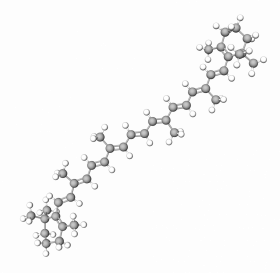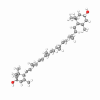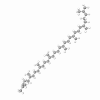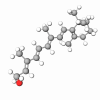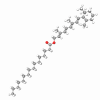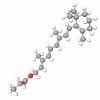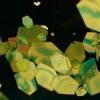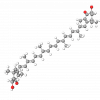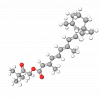Carotenoids are natural plant pigments that give plants and fruits their color. ß-Carotene is a carotenoid found primarily in carrots and provides a yellow to orange-red color to personal care products. In 1831, beta-carotene was isolated by Wackenroder. Its structure was determined by Karrer in 1931, who received a Nobel prize for his work.
It is an approved coloring agent for foods. Besides carrots, Beta-Carotene naturally occurs in vegetables (sweet potatoes, pumpkins, and squash), and fruits (apricots, cantaloupe melon, mango, paw, nectarines, and peaches).
Chemically, carotenoids are tetraterpenoids and constitute a class of labile, easily oxidizable, and oil-soluble compounds consisting of 40-carbon polyunsaturated hydrocarbon molecules. The body converts beta-carotene into vitamin A using a carotenoid oxygenase enzyme (Beta-carotene 15,15'-dioxygenase), providing effects similar to retinoids. Unfortunately, that enzyme is only active in the intestine and liver and produced retinal can only reach the skin from the bloodstream.
Beta-carotene is recommended in skincare products where it can be used to condition rough or reddened skin. Because of its ß-Carotene content, the extract may be added to sun care or tanning preparations. In addition, a European report claims that carotenes appear to exhibit specific properties, which may help screen against the effects of UV radiation and free radicals. With vitamins E and C, it forms a trio of antioxidant vitamins frequently used together for a preventive effect on skin disorders, unhealthy conditions, or even cancer. This ingredient also may be used in baby products, night or day creams, and treatment oils that help maintain the skin's healthy function.
